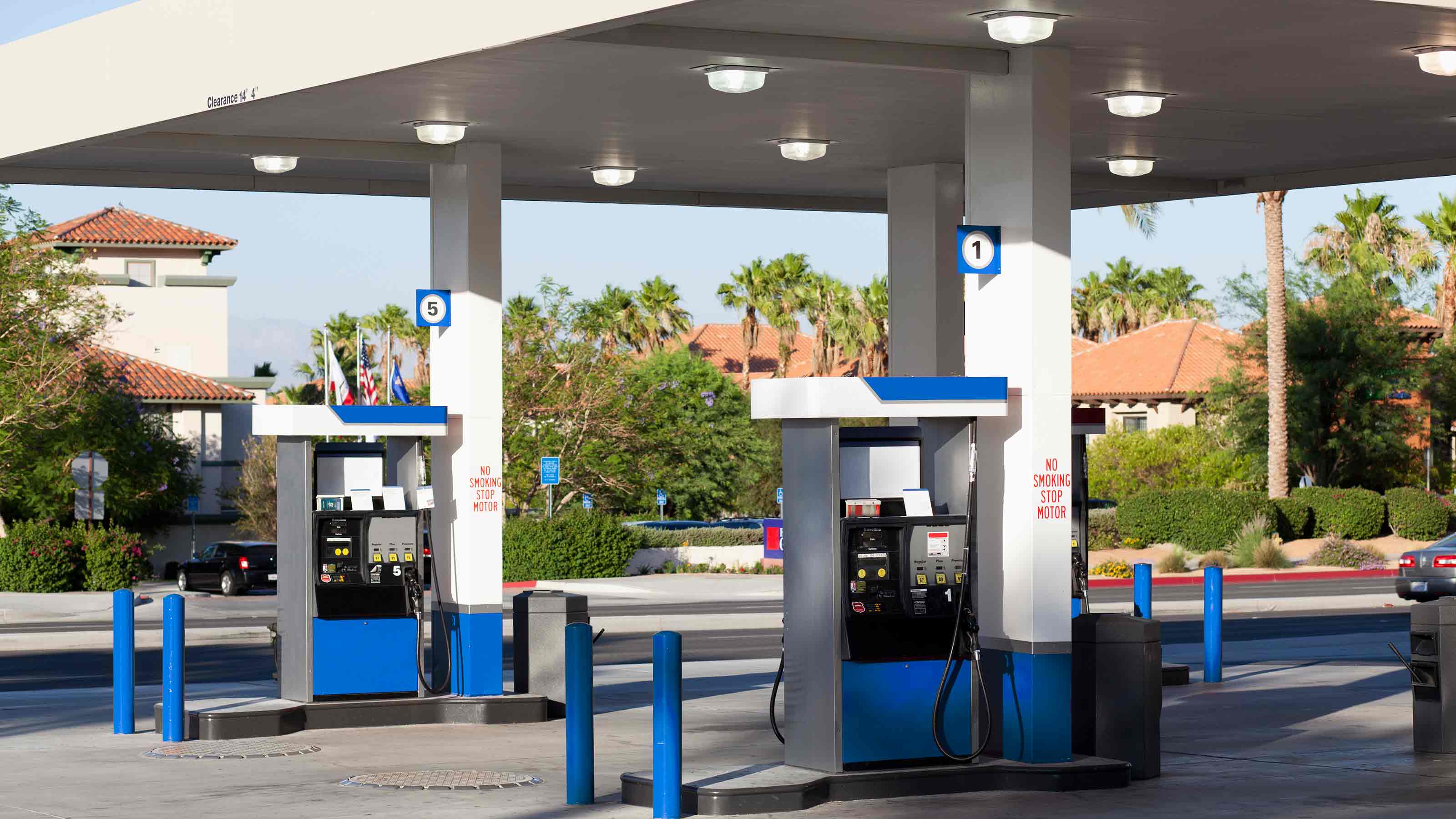Gas Prices Are Going Down, Finally
Most forms of energy should cost less this fall, with one big exception.


After peaking early this summer at more than $5 per gallon, the national average price of regular unleaded has been on a prolonged drop. Last week, the national average slipped below $4, and sits at $3.92 per gallon today. Drivers paying those prices probably aren’t celebrating; gas still costs about 70 cents more per gallon now than it did a year ago. But cheaper is always better. And it’s likely that more price relief is on the way.
The unofficial end of the summer travel season, Labor Day weekend, is almost here. Soon, kids will return to school, and family road trips will taper off, easing demand for fuel. Also, refiners switch from costlier summer-blend gas formulations that are required to meet air pollution standards, to cheaper, winter-blend gas. Meanwhile, crude oil, the biggest factor in determining gas prices, is falling in price, too, as investors bet that an economic slowdown will mean less demand for oil in coming months. If all those trends continue, look for the national average price of gas to slip to $3.50 per gallon before the year ends.
Other types of energy are getting a bit cheaper, too: Namely, propane and heating oil. Both spiked earlier this year when crude oil shot up after Russia invaded Ukraine, and now, both are seeing pullbacks. Again, they’re still expensive compared with last year. However, they should both get a bit cheaper before cool weather arrives, giving consumers a chance to fill up storage tanks at friendlier prices.
From just $107.88 $24.99 for Kiplinger Personal Finance
Become a smarter, better informed investor. Subscribe from just $107.88 $24.99, plus get up to 4 Special Issues

Sign up for Kiplinger’s Free Newsletters
Profit and prosper with the best of expert advice on investing, taxes, retirement, personal finance and more - straight to your e-mail.
Profit and prosper with the best of expert advice - straight to your e-mail.
One part of their utility bills that figures to really sting a lot of consumers in coming months: Natural gas bills. Unlike crude oil and the fuels refined from oil, natural gas prices have been rising lately, due to strong demand both in the U.S. and in Europe, where buyers are scrambling to find replacements for gas that Russia is no longer delivering. Gas futures contracts traded on financial markets are roughly double their price from this time last year, and could go higher still once cold weather arrives. Since roughly half of American households heat their homes with gas, that means a lot of painfully high bills once furnaces start cranking up.
Profit and prosper with the best of Kiplinger's advice on investing, taxes, retirement, personal finance and much more. Delivered daily. Enter your email in the box and click Sign Me Up.

Jim joined Kiplinger in December 2010, covering energy and commodities markets, autos, environment and sports business for The Kiplinger Letter. He is now the managing editor of The Kiplinger Letter and The Kiplinger Tax Letter. He also frequently appears on radio and podcasts to discuss the outlook for gasoline prices and new car technologies. Prior to joining Kiplinger, he covered federal grant funding and congressional appropriations for Thompson Publishing Group, writing for a range of print and online publications. He holds a BA in history from the University of Rochester.
-
 A Contrarian Approach Pays Off for This Bond Fund
A Contrarian Approach Pays Off for This Bond FundThe Dodge & Cox Income Fund has outperformed in 2025 thanks to its managers' fearless approach.
-
 How AI Is Changing the Way Americans Spend on Live Events
How AI Is Changing the Way Americans Spend on Live EventsAI bots are reshaping ticket prices, resale markets and how fans shop. Here's what it means for your wallet and how to get the best deals on concerts, sports and shows.
-
 7 Outrageous Ways Retirees Can Invest Their Money in 2026
7 Outrageous Ways Retirees Can Invest Their Money in 2026Stocks and bonds aren't the only ways to invest your retirement "fun money."
-
 9 Types of Insurance You Probably Don't Need
9 Types of Insurance You Probably Don't NeedFinancial Planning If you're paying for these types of insurance, you may be wasting your money. Here's what you need to know.
-
 Amazon Resale: Where Amazon Prime Returns Become Your Online Bargains
Amazon Resale: Where Amazon Prime Returns Become Your Online BargainsFeature Amazon Resale products may have some imperfections, but that often leads to wildly discounted prices.
-
 Roth IRA Contribution Limits for 2026
Roth IRA Contribution Limits for 2026Roth IRAs Roth IRAs allow you to save for retirement with after-tax dollars while you're working, and then withdraw those contributions and earnings tax-free when you retire. Here's a look at 2026 limits and income-based phaseouts.
-
 Four Tips for Renting Out Your Home on Airbnb
Four Tips for Renting Out Your Home on Airbnbreal estate Here's what you should know before listing your home on Airbnb.
-
 Five Ways to a Cheap Last-Minute Vacation
Five Ways to a Cheap Last-Minute VacationTravel It is possible to pull off a cheap last-minute vacation. Here are some tips to make it happen.
-
 How Much Life Insurance Do You Need?
How Much Life Insurance Do You Need?insurance When assessing how much life insurance you need, take a systematic approach instead of relying on rules of thumb.
-
 When Does Amazon Prime Day End in October? Everything We Know, Plus the Best Deals on Samsonite, Samsung and More
When Does Amazon Prime Day End in October? Everything We Know, Plus the Best Deals on Samsonite, Samsung and MoreAmazon Prime The Amazon Prime Big Deal Days sale ends soon. Here are the key details you need to know, plus some of our favorite deals members can shop before it's over.
-
 How to Shop for Life Insurance in 3 Easy Steps
How to Shop for Life Insurance in 3 Easy Stepsinsurance Shopping for life insurance? You may be able to estimate how much you need online, but that's just the start of your search.